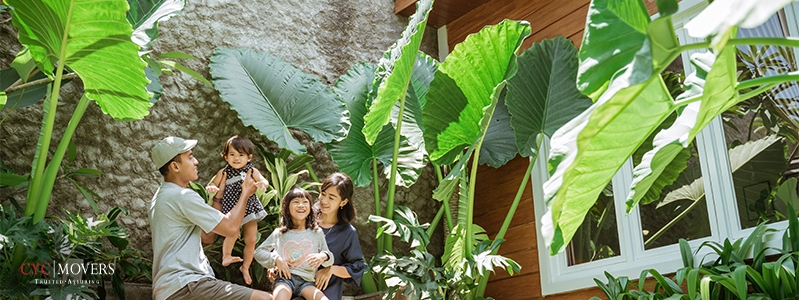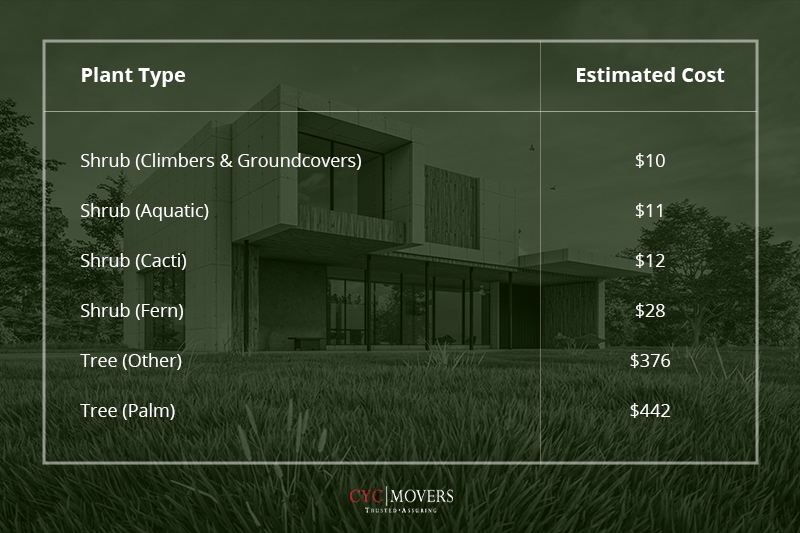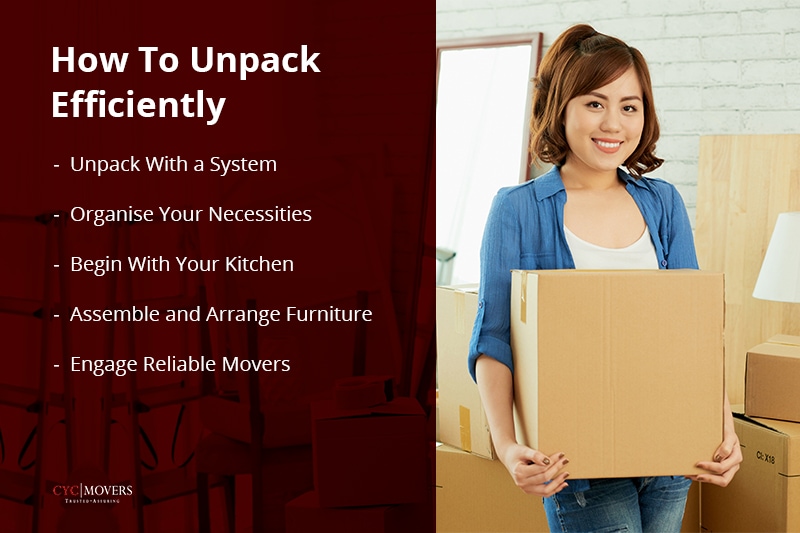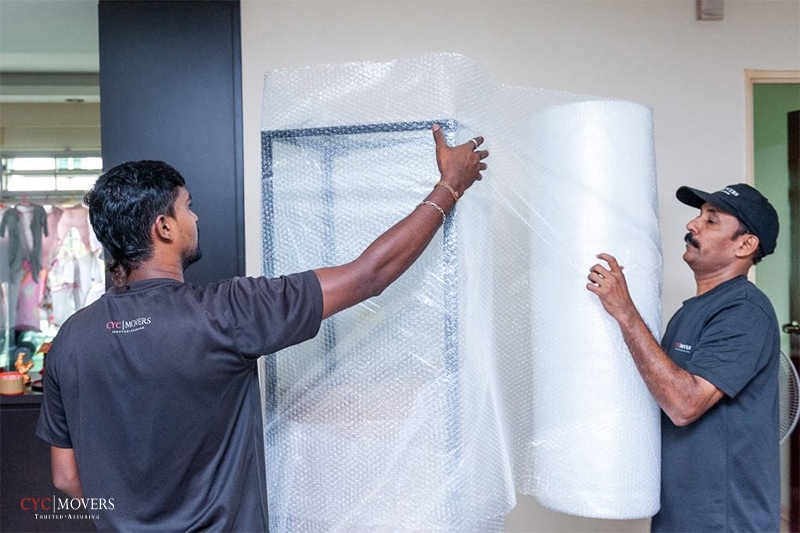
INTRODUCTION
Everyone talks about how moving into a landed property in Singapore is an exciting milestone, and tend to get overly enthusiastic about things like having a garden, aquarium and ponds within your home. However, no one really talks about the amount of preparation it takes to move into a landed property in Singapore.
We understand how daunting it can be, especially when you are not sure where to begin. As such, this article will serve as a guide for those who are preparing for their big move. Read on as we reveal tips on how to ease your house moving process, efficient packing and unpacking tricks and how to go about finding professional movers in Singapore.
PART 2 – TIPS TO MAKE MOVING DAY SMOOTH
2.1. Preparing For Your Move
Buying a landed property in Singapore has many perks including having your own yard and better privacy, but you will also have to handle more maintenance issues since your home has an exterior facade. Most of the time, landed property homes are not located within close proximity to amenities like shopping malls or hardware stores, unlike HDB flats or condominiums. Due to these reasons, you will have to take into account some of these factors when preparing your move to a landed home:
1. Work out the maintenance schedule and costs
Living in a landed home also means you are in full control of your home’s maintenance, something that a condominium’s management team would have taken care of. Some of the typical home maintenance includes repainting your home’s exterior, retiling your property’s roof and cleaning ponds and roofs. Once you establish a schedule of routine maintenance for your home, it will be easier for you to estimate the recurring costs of maintenance.
Though this may seem intimidating, some landed homeowners may spend a lot less on maintaining their homes than condominium owners. For instance, some luxury condominiums charge over $1,000 per month just for maintenance. The beauty of owning a landed home is that it offers you the freedom to carry out maintenance at your convenience, and only pay for what you need.
2. Make arrangements for transportation
Typically, landed housing is located a little farther from public housing estates, MRT stations, and shopping malls. Living in a landed home can offer a great deal of privacy, exclusivity, and security, but on the downside, convenience stores, coffee shops, and shopping malls are much less accessible. If you have kids, they may have to walk quite a distance to get to the nearest bus stop or MRT station when making their way to school. Due to this, you may need to make arrangements for transportation; whether it’s arranging a school bus to pick up and fetch your kids to and fro or giving your domestic helper access to private hire vehicles.
3. Prepare your family members or domestic helper for different household chores
Moving into a landed home also entails more daily household chores. Even the simplest daily chores, such as mopping and sweeping, will require more time and effort due to the huge space. Once you’ve upgraded to a landed home, you will have to take care of the external space, also known as your garden or yard. It’s important to remember that weeds and grass grow pretty quickly too in Singapore’s tropical climate. Also, you should assign someone in the house to be responsible for consistently checking your potted plants or ponds for stagnant water to avoid incurring fines from The National Environment Agency (NEA). During the moving process, it would be a good idea to discuss the added chores with your family members and ensure that everyone is on board.
4. Manage your own security
Upgrading to a landed property means that you are solely responsible for your own security. It is highly recommended that you get a basic CCTV security system for your landed home. Alternatively, you can also opt for Smart Home systems that can alert you directly through your smartphones. Security systems vary in price based on the structure of your home and the level of surveillance you require. In general, the more potential entrances your home has, the more expensive it will be.
5. Invest in pest control services
Finally, you might want to consider a pest control contract since mosquitoes are by far the most common problem faced by landed homeowners. In addition to being a health hazard, mosquito nesting in your home can result in a hefty NEA fine too. Hiring an exterminator on a case-by-case basis can be quite costly, and it can be inconvenient as you may need to leave while they fumigate your home. A simple termite infestation in a landed home can cost up to $800. Therefore, it might be wise to negotiate a long-term contract with a pest control company so that they can help with setting up preventative measures like installing mosquito traps and making regular visits to check on the premises.
2.2 Do’s And Don’ts When Packing Furniture For Moving
When preparing for a house moving, it’s extremely important to protect your belongings and make sure that they arrive in your new home in the exact same condition as when they left your old home. Furniture pieces are generally harder to pack due to their substantial size and weight. Furthermore, some furniture needs to be handled with extreme care due to its fragile nature. For this reason, hiring a professional moving company is still your best and safest bet when it comes to packing your belongings and furniture carefully and efficiently.
Before you begin sourcing for professional movers, here are some basic do’s and don’ts of packing furniture for moving to make the entire process a breeze for both you and your house movers:
Do:
- Come up with a detailed inventory list of all your furniture pieces at home. With this checklist, you can determine which of the furniture you should take with you to your new home and which ones should be sold, gifted to family or donated to charity.
- Make sure the large furniture pieces can pass safely through your new home’s doors and corners by measuring them.
- Ensure all your furniture pieces are free of any damage prior to packing them up and add any important information to the furniture inventory list. This initial assessment will help you decide which furniture pieces to bring with you to your new home.
- Clean your furniture before packing them for moving to ensure that any dust or coarse particles do not damage the delicate surfaces.
- Prepare proper packing supplies and protective materials to wrap and cover your furniture.
- Remove all items from inside your furniture to make the moving process safe and easier for the house movers. To make the furniture pieces easier to transport, empty your shelves, cabinets, and drawers and pack the items separately.
- Take apart your furniture pieces that are too big to fit through some of the tighter and smaller openings in your new home.
- Cover your fragile pieces of furniture with bubble wrap.
Don’t:
- Pack your old furniture items that are too damaged, unless you’re planning to reupholster them.
- Use bubble wrap or packing tape directly over delicate surfaces.
- Leave large furniture fully assembled unless you have measured them properly and can guarantee they will fit through all openings along the intended route.
- Rush the furniture packing process without evaluating whether you can manage it without professional assistance from qualified movers and packers.
PART 3 – THE REALITY OF MOVING INTO A LANDED PROPERTY IN SINGAPORE
3.1. 3 New Things To Invest On
Moving into a landed property comes with many added responsibilities that were not required when you were living in a condo or HDB flat. Taking on these responsibilities may cost you hundreds of thousands of dollars, so you will definitely want to make sure you budget accordingly when buying a landed property. So what are the additional things you’ll have to pay for? Read on as we share some of the new expenses and responsibilities that you may need to consider so that you can fully enjoy your new landed home.
1. Garden and landscaping
| Plant type | Estimated cost |
| Shrub (Climbers & Groundcovers) | $10 |
| Shrub (Aquatic) | $11 |
| Shrub (Cacti) | $12 |
| Shrub (Fern) | $28 |
| Tree (Other) | $376 |
| Tree (Palm) | $442 |
A landed property also gives you an outdoor area where you can create your own garden, and gardens can be used as a space to create a private outdoor sanctuary in your own home. However, landscaping is not cheap, especially if you intend to make major renovations that require professional landscapers. Landscapers usually charge S$41/hour, but you’ll also need to factor in things like soil, stones, shrubbery, and trees, which vary in price. By choosing common shrubs and inexpensive materials, you can save on costs; however, luxurious and rare materials can cost thousands of dollars. For instance, unique and well-tended Japanese bonsai plants can cost as much as S$70,000.
Landscaping and gardening services may also be required for routine maintenance. Depending on your needs, gardeners will trim shrubbery, weeds, mow the lawn, and pull weeds once a week or twice a week to keep your garden looking lush and beautiful. Of course, it is always possible to do your own gardening if your foundation is already in place. If you choose to do your own gardening, you’ll have to invest in the plants and most importantly, proper gardening tools. Depending on your budget, you can buy plants from nurseries or buy second-hand plants on sites like Carousell. It is generally more expensive to buy large trees, ranging from S$5 for saplings to several thousand dollars for mature trees. Typically, smaller shrubs like ferns are considerably cheaper with their price ranging between $10 and $30.
2. Roofing
When residing in a landed property, you should know that the exterior facade of your home is fully your responsibility. When you are responsible for repairing and maintaining the exterior of your home, such as your roof, you should be aware of some of the issues you may encounter. Some of these issues include loose shingles, water damage, thermal shock, or physical debris damage.
How can you spot roof damage? When you discover cracks, curls, or missing shingles, peeling paint or clogged drains on your roof, you may be in need of roof repair. If you are looking at the interior of your home, you need to keep an eye out for dark spots, sagging, water drips, and spaces where the light shines through. In the meantime, if the roof damage has caused interior damage to your home, you can temporarily seal the hole by applying putty to the ceiling while waiting for the contractor to fix it. Alternatively, you can place a bucket under the leak to contain it.
Roof repair costs really rely on the type of roof you have and the extent of the damage. If your roof is relatively new and under 15 years old, then spot repairs may be possible. Typically, it costs around S$200 to fix a roof tile. Those with more severe roofing problems, such as a sagging roof, might have to pay S$1,000 to S$2,000 for an additional joist or rafter, or even up to S$12,000 to replace the whole roof.
3. Post-monsoon home repairs
Although Singapore has been spared many of the natural disasters that affect other ASEAN nations, like earthquakes, hurricanes and wildfires, the rainy monsoon season in Singapore can still cause a great deal of damage to homes. Did you know that flooding in Singapore has damaged over 550 homes and cost Singaporeans a whopping USD$23.8 million since 2000? HDB flats and condos are generally built with preventative measures but landed properties may still have weak points that will be your responsibility to repair. Previous owners’ renovations or builds may not have used the best materials to prevent flooding. So if you live in a flood-prone neighbourhood, you may need to do some preventative renovations and prepare materials for the monsoon season. While wood floors and walls may appear aesthetically pleasing, they may not hold up well to flooding, compared to concrete, ceramic, or pressure-treated rubber.
3.2. Tips To Unpack Efficiently After Moving
When it comes to moving into a new place, everyone feels differently about packing and unpacking. Some people find that packing up their household is tedious, but unpacking at the new house fills them with energy and opportunity. Others, on the other hand, relish the excitement of packing up their belongings but dread the chore of unpacking once the moving company has delivered the boxes to the new house. Whichever group you belong to, following a basic process will make your moving experience go as swimmingly as possible. Here are some easy tips on how to unpack efficiently after moving into your new landed home:
Come up with a basic unpacking system
Before you jump straight into randomly opening your boxes, it’s important to know what it is that you’re unpacking. This is when your inventory list comes in handy, which is why we highly recommend creating a detailed list of all your belongings and furniture pieces before you begin packing for your move. The ideal packing method involves organising items by usage or by room, so before you start emptying the boxes, examine the boxes’ labels and open them up to take a peek of what’s inside.
Begin with the essentials boxes
Once you have an unpacking system in place, it’s time to unpack the essentials first. Your essential boxes should contain all the things you need to function temporarily while you ease yourself into the moving process. A few of these essentials include basic things you need to tide through the first couple of days in your new home like toiletries, medications, books and important documents, and some basic cooking supplies.
Unpack your kitchen supplies first
The kitchen should be the first place you settle in your new home after unpacking your essential boxes. Labelling the boxes properly should make it easier for you to find what you need. Connect all the major kitchen appliances and any smaller appliances that will make your life easier, such as your toaster and coffeemaker. Focus on unpacking the pots and pans first, and then organise the kitchen after the rest of the house is unpacked.
Assemble and arrange your furniture
It should be relatively easy to arrange your furniture if you had floorplan sketches of your new home before you moved. If you need to rearrange the furniture in your new home, develop the plan in a systematic way so that it only needs to be done once. Large pieces of furniture should only be assembled when you already have an idea of where it will be placed.
Engage professional movers and packers
Packing and moving furniture is a time-consuming process and not everyone has the luxury of time. If you struggle with finding the time to pack for your move, engaging a reliable team of house movers that can help with packing and unpacking as well as moving your furniture would be the best course of action. However, it’s important to remember that not all moving companies in Singapore offer packing and unpacking services. Most of them simply transport your boxes from your old home to your new one.
If you are on the lookout for experienced movers and packers that can ease your house moving experience, consider engaging CYC Movers. CYC Movers is a professional moving company in Singapore that offers various moving services. Not only can our team of movers help with packing your belongings and furniture, but we can also help to unpack and organise your belongings and furniture in your home. This service includes placing your items neatly into your desired locations in your new home and organising your cabinets and shelves. In addition, customers of CYC Movers can enjoy a 20% discount on their first 3-hour organising session by our preferred partner, Nathalie Ricaud, when they choose our Professional House Organizing Services.
Even if you run out of storage or are not sure where to place your excess furniture items in your new home, don’t be quick to let go of your prized possessions! Instead, consider our temporary storage facility for your furniture storage solutions! No matter how long you plan on storing your excess furniture, we offer both short and long term furniture storage solutions to help you with your move whether you’re moving house, office, or relocating internationally.
3.3. How To Find The Right Moving Services
House moving can undoubtedly be a stressful experience, which is why finding the right team of reliable movers to assist you in the process can make a big difference. Here are some things to consider when sourcing for moving services in Singapore:
Moving Services
Every moving company offer different services. It helps to understand what are the specific moving services you need. Consider whether you need help with packing and unpacking your belongings and furniture or you simply need a moving company to transport your things to your new home safely. Ensure that the moving company you choose provides the necessary moving services you need.
Online Reviews
It would be helpful if you could get a rough idea of how the moving company works and see what their previous clients have to say about the moving company. To learn more about their previous customers’ experiences with the company, check out their website or social media platforms.
Insurance Coverage
Moving companies usually offer insurance coverage from third-party providers. As there are several kinds of insurance, it would be best to clarify the following with the movers:
- What items are covered?
- When are the items covered during the moving process?
- What kind of incidents or situations will be covered?
- What is the maximum amount that can be claimed?
- What’s the claiming procedure like?
CONCLUSION
Moving into a new place can be a cumbersome process especially when you’re moving into a larger property. However, with the help of a professional moving company like CYC Movers, you are guaranteed a seamless moving experience. CYC Movers is more than just a moving company that can help transport your boxes to your new place of residence. Our experienced team of movers are skilled in dismantling and assembling furniture, are able to provide packing materials, and even move your furniture to the designated location in your new home for you. We even handle things like furniture removal so that your move will be completely hassle-free.
If you need a reliable moving company, arrange a professional house visit with us so that we are able to assess your home and understand your moving needs better. Contact us today to get a free quote!




